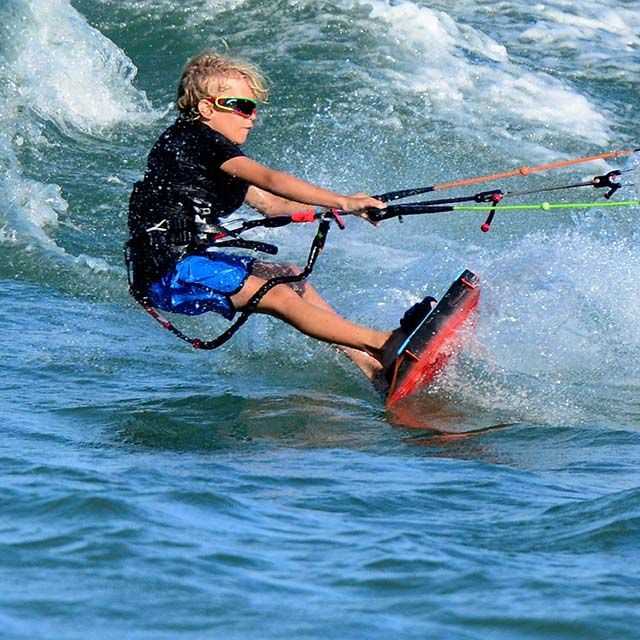
[dropcap]K[/dropcap]iteboarding and other forms of “Traction Kiting” have evolved a lot over the past 10 years. Kiteboarding used to be a sport that was almost impossible to conquer and was really not accessible to the average person. During the early days, kiteboarding had a bad reputation for being accident prone and extremely dangerous. These days, huge developments in safety and flying characteristics are making kiteboarding possible and safer people with an average level of fitness and an eagerness to learn.
In the early days of the sport, once you launched the kite, it was almost fully powered and the only way to really get rid of the power was to land or ditch the kite. These days (with proper instruction) you can launch the kite and de-power it by almost 90% while it’s still flying. This means that whenever you need a break or have a wipeout, you can calmly fly the kite and take your time catching your breath or regrouping. What has made this possible is a change in the kite design allowing the user to have more control over the trailing edge of the kite. This process is called sheeting. It is very similar to the flaps on the wings of an airplane. When the kiter sheets in (pulls in on the bar), they are pulling in on the trailing edge and grabbing more wind. Sheeting out is the exact opposite. Over the past few years the range of motion on this feature has increased dramatically and has completely changed the sport. Not only making it safer but also easier and allowing the kites to have more wind range.
Another huge development in performance has been the safety release mechanisms. With modern equipment just letting go of the control bar will do the trick most of the time. The kite will remain attached to the harness but most of the power will be released from the kite. When that isn’t enough, there is a safety release located a few inches up from the kiteboarders point of attachment to the harness. If something catastrophic happens, whether it be an equipment malfunction, pilot error or weather related incident, the kite flyer is able to activate this release by simply pushing out on it with one or two hands. This action will release the tension on three out of the four lines that are attaching the kiter to the kite. This process is called flagging the kite and the kite will be completely neutralized yet still connected to the kiter by one line. Over the years these release mechanisms have become smoother, easier to activate and more effective.
Although these new developments have made kiteboarding, kitesurfing and other forms of traction kiting much more accessible, it is important to understand your limits. Kiteboarding is still not for everyone and at the end of the day is still considered an extreme sport. Many kite schools and instructors offer introductory programs which give you a good taste of the sport and a good understanding of all of the safety protocols. This is a great way to determine if this sport is right for you.
